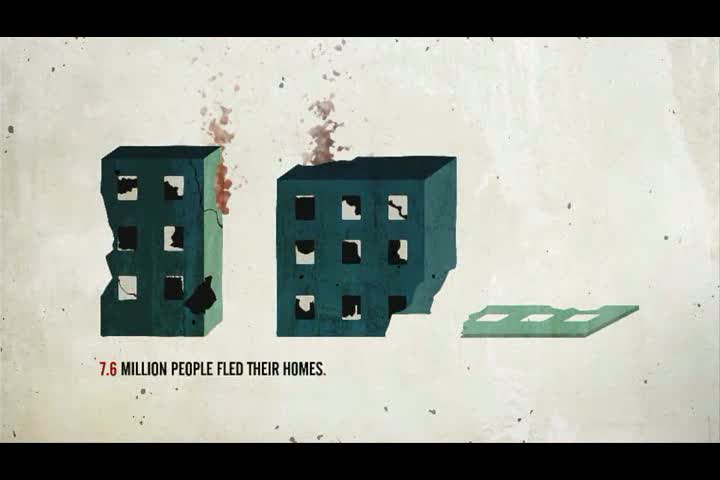UNHCR: The UN Refugee Agency
Also on this site
- Figures at a Glance
- 2005 Annual Consultations with NGOs
- Liberia country page
- Turkey country page
- Lebanon country page
- Privacy Policy
- Latin America regional page
- Global Migration Group
- Jordan country page
- Global Trends 2011
- IDPs - Policy and Guiding Documents
- Europe regional page
- Iraq country page
- Uganda country page
- Syrian Arab Republic country page
- UNHCR Statistical Online Population Database
- UNHCR Statistical Yearbooks
- Brazil Plan of Action – One year of Implementation
- The Brazil Declaration
Asylum Trends
Asylum claims in industrialized countries
- Asylum Levels and Trends in Industrialized Countries, First Half 2014
- Latest monthly data (Excel tables, zipped format)
- Asylum Levels and Trends in Industrialized Countries 2013
- Asylum Levels and Trends in Industrialized Countries 2013, Annex tables (Excel tables, zipped format)
- Asylum Levels and Trends in Industrialized Countries, First Half 2013: Statistical Overview of Asylum Applications Lodged in Europe and Selected Non-European Countries (Excel tables, zipped format)
- more documents
Current trends in forced displacement and humanitarian action: challenges and opportunities confronting UNHCR
Harrell-Bond Human Rights Lecture delivered by António Guterres, UN High Commissioner for Refugees, at the Refugee Studies Centre of the University of Oxford, 13 October 2010
UNHCR Asylum Trends, First Half 2014
Levels and trends in Industrialized countries
Annexes (Excel tables) available for downloading here [zipped file]. Mid-Year Trends
Mid-Year Trends
Global Trends in persons of concern to UNHCR at mid-year
UNHCR Asylum Trends, 2014
Levels and trends in Industrialized countries
Annexes (Excel tables) available for downloading here [zip file].UNHCR Global Trends 2014: World At War
Global forced displacement trends
Yearbook Excel annex tables available for downloading here [zipped file, 919Kb].Mid-Year Trends, June 2015
Trends in populations of concern to UNHCR
Annexes (Excel tables) available for downloading here [zip file].
UNHCR Global Trends 2011
A year of crises
Annexes (Excel tables) available for downloading here [zipped file, 599Kb].Statistics
Trends on asylum and protection in EU Member States.
Statistics
Numbers are important in the aid business and UNHCR's statisticians monitor them daily.
UNHCR Statistical Yearbooks
These yearbooks follow major trends in displacement, protection and solutions.
UNHCR Statistical Yearbook 2014
Global forced displacement trends.
Annexes (Excel tables) available for downloading here [zip file].
2010 Stateless Persons Statistics
Source: UNHCR Global Trends 2010, Annexes, Table 7 Stateless Persons 2010
 Projected Global Resettlement Needs
Projected Global Resettlement Needs
Provides an overview of progress and challenges, in addition to trends in refugee resettlement. It is prepared annually by UNHCR and introduces the projected global resettlement needs and capacity for the next year.
- UNHCR Projected Global Resettlement Needs 2016
- UNHCR Projected Global Resettlement Needs 2015
- UNHCR Projected Global Resettlement Needs 2014
- UNHCR Projected Global Resettlement Needs 2013
- UNHCR Projected Global Resettlement Needs 2012
Additional Materials
- Opening statement by Professor Arjun Appadurai, Paulette Goddard Professor in Media Culture and Communication at New York University
- Briefing paper: Understanding the root causes of displacement, IDMC 2015
- NGO Key Messages on Root Causes of Displacement
- Addis Ababa Commitment towards Somali Refugees
- UN Security Council Resolution 2250 (2015) on Youth, Peace and Security
- Nansen Initiative: Agenda for the Protection of Cross-Border Displaced Persons in the Context of Disasters and Climate Change
- Guidance on Protecting People from Disasters and Environmental Change through Planned Relocation, October 2015
- UNHCR, the Environment and Climate Change, October 2015
- The Challenge of Sustainable Peace - Report of the Advisory Group of Experts for the 2015 Review of the United Nations Peacebuilding Architecture
- Report of the High-level Independent Panel on Peace Operations on uniting our strengths for peace: politics, partnership and people
- 'Human Rights Up Front' Initiative
- UNHCR Global Trends - Forced Displacement in 2014
- IDMC Global Overview 2015 – People internally displaced by conflict and violence
- Transforming our world: the 2030 Agenda for Sustainable Development, A/70/L.1
- Restoring Humanity, Global Voices Calling for Action - Synthesis of the Consultation Process for the World Humanitarian Summit, Executive Summary
2011 Global Trends
UNHCR's annual Global Trends report shows 2011 to have been a record year for forced displacement across borders, with more people becoming refugees than at any time since 2000. Of the 4.3 million people newly displaced in 2011, 800,000 actually left their countries and thus became refugees.
Worldwide, 42.5 million people ended 2011 either as refugees (15.2 million), internally displaced (26.4 million) or in the process of seeking asylum (895,000).
The report also highlights several worrying trends: One is that forced displacement is affecting larger numbers of people globally, with the annual number exceeding 42 million in the last five years. Another is that a person who becomes a refugee is likely to remain one for several years: of the 10.4 million refugees under UNHCR's mandate, almost three-quarters (7.1 million) have been in protracted exile for at least five years awaiting a solution.
2011 Global Trends
Global Trends photo essay: Flight to safety 2014
Global displacement, from wars, conflict, and persecution, is at the highest level ever recorded, and accelerating fast. Worldwide, one in every 122 humans is now uprooted. If displacement was the population of a country, it would be the world's 24th biggest.
UNHCR's new annual Global Trends report reveals a sharp escalation in the number of people forced to flee their homes, with 59.5 million forcibly displaced at the end of 2014, compared to 51.2 million a year earlier. During 2014, an average of 42,500 people became displaced every day.
The war that erupted in Syria in 2011 has propelled it into the world's single largest driver of displacement, but instability and conflict in places like the Central African Republic, South Sudan, Burundi and Afghanistan is also contributing heavily.
With huge shortages of funding and wide gaps in the global regime for protecting victims of war, people in desperate need of help are being abandoned. Now, more than ever, the world must work together to build and preserve peace.
Meet just some of the displaced...
Global Trends photo essay: Flight to safety 2014


































